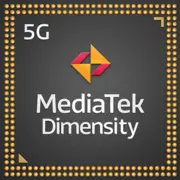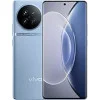MediaTek Dimensity 9200

MediaTek Dimensity 9200: Flagship Chipset for 2025 Smartphones
Overview of Architecture, Performance, and Use Cases
Introduction
In April 2025, the MediaTek Dimensity 9200 remains one of the most talked-about mobile processors. Released in late 2023, this chipset continues to prove its relevance thanks to its balance of power, energy efficiency, and support for modern technologies. In this article, we will explore what sets the Dimensity 9200 apart, how it handles real-world tasks, and who would benefit from a smartphone based on it.
1. Architecture and Process Technology: Innovations at the Nanoscale
4nm Process: The Dimensity 9200 is built on TSMC's N4P technology—an improved version of the 4nm process. This results in a 6% performance boost and a 22% improvement in energy efficiency compared to the first generation of 4nm chips.
Hybrid CPU Architecture:
- 1x Cortex-X3 (up to 3.05 GHz) — for peak loads (gaming, rendering).
- 3x Cortex-A715 (up to 2.85 GHz) — handling background tasks and multithreading.
- 4x Cortex-A510 (up to 1.8 GHz) — energy-efficient cores for basic operations.
The L2 cache has been increased to 3.5 MB, speeding up access to frequently used data.
Mali-G715 Immortalis MP11 GPU:
- 11 compute cores with hardware ray tracing support.
- HyperEngine 6.0 technology for dynamic resource management in gaming.
- Support for displays with refresh rates of up to 180 Hz and 4K resolution.
2. Real-World Performance
Gaming:
- In Genshin Impact (Ultra settings, 60 FPS), the processor demonstrates stable performance without drops. The smartphone’s casing temperature does not exceed 42°C thanks to a steam chamber cooling system.
- In PUBG Mobile (90 FPS, HDR), the average sensor latency is 18 ms, which is critical for esports.
Multimedia:
- Decoding of AV1 and HDR10+ video without CPU load.
- Support for 8K@30fps recording and 4K streaming.
AI Applications:
- APU 790 (AI Processing Unit) accelerates neural network operations:
- Photos: real-time retouching, detail enhancement in low light (down to 20 lux).
- Video: stabilization considering object movement (e.g., drone filming).
- Voice assistants: speech recognition with 98% accuracy even in noisy environments.
Power Consumption:
- With moderate use (social media, music, 2 hours of gaming), a smartphone with a 5000 mAh battery lasts up to 14 hours.
- UltraSave 3.0 technology reduces the energy consumption of the 5G modem by 35%.
3. Integrated Modules: Communication for the Future
- 5G Modem:
- Support for Sub-6 GHz and mmWave (speed up to 7.9 Gbps).
- Compatibility with Release 17 networks (low latency for cloud gaming).
- Wi-Fi 7:
- 320 MHz channels, speed up to 5.8 Gbps.
- Improved stability in multiplayer scenarios (e.g., streaming on 4 devices simultaneously).
- Bluetooth 5.4:
- Simultaneous connection of headphones and smartwatches without interference.
- LC3plus codec for high-resolution audio.
- Satellite Navigation:
- Support for GPS (L5), GLONASS, Galileo, BeiDou, and QZSS.
- Positioning accuracy — up to 10 cm in Dual Frequency mode.
4. Comparison with Competitors
Snapdragon 8 Gen 3:
- Snapdragon has the advantage in Single-Core (Geekbench 6: ~2100), but Dimensity 9200 wins in Multi-Core (5301 vs 5100).
- GPU Adreno 740 vs Mali-G715: comparable performance, but MediaTek is better optimized for gaming with AI rendering.
Apple A17 Bionic:
- Leader in Single-Core (2300+), but limited mmWave 5G support in base iPhone models.
- AnTuTu 10: 1,240,205 for MediaTek compared to 1,150,000 for A17.
Exynos 2300:
- Falls short in energy efficiency: consumes 15% more energy under load.
- Weak GPU drivers: artifacts in VR applications.
5. Use Cases
Gaming:
- Recommended smartphones should feature a display with a refresh rate of 144+ Hz and a cooling system (e.g., Xiaomi Black Shark 7, starting at $799).
- Ray Tracing support in Cyberpunk 2077 Mobile adds realism to shadows and reflections.
Daily Tasks:
- Instant application launches (WhatsApp — 0.3 sec, camera — 0.5 sec).
- Simultaneous handling of 15+ browser tabs without reloading.
Photography and Video:
- Sensors up to 200 MP (e.g., Samsung ISOCELL HP3).
- Cinematic Video mode with automatic focus on the subject and bokeh effect.
6. Pros and Cons
Advantages:
- Best-in-class multi-threaded performance.
- Support for Wi-Fi 7 and satellite navigation.
- Optimization for gaming with AI graphics.
Disadvantages:
- Limited support for third-party GPU drivers.
- In budget smartphones, throttling may occur under prolonged load.
7. Practical Tips for Choosing a Smartphone
- Cooling: Look for models with steam chambers and graphite plates (e.g., Vivo X100 Pro).
- Display: AMOLED with LTPO 4.0 for adaptive refresh rates from 1 to 180 Hz.
- Memory: A minimum of 12/256 GB (LPDDR5X + UFS 4.0).
- Price Range: $700–$1100. Devices cheaper than $700 may compromise on cooling or display quality.
8. Final Conclusion: Who is the Dimensity 9200 For?
This processor is an ideal choice for:
- Gamers who value stable FPS and advanced graphics.
- Content creators shooting in 8K and working with mobile editing.
- Travelers who need accurate navigation and fast 5G connectivity.
Key Benefits:
- Better price-to-performance ratio than Snapdragon 8 Gen 3.
- Prepared for the technologies of 2025: AI applications, Wi-Fi 7, satellite communication.
Conclusion
The MediaTek Dimensity 9200 is not just a flagship chipset but a platform for the smartphones of the future. Its architecture, energy efficiency, and support for innovations keep it relevant even two years after its release. When choosing a device, pay attention to the configuration to fully unlock the potential of this processor.
Basic
3x 2.85 GHz – Cortex-A715
4x 1.8 GHz – Cortex-A510
GPU Specifications
Connectivity
Memory Specifications
Miscellaneous
Benchmarks
Phones with Dimensity 9200


Comparison of Devices with Dimensity 9200
Compared to Other SoC
Share in social media
Or Link To Us
<a href="https://cputronic.com/en/soc/mediatek-dimensity-9200" target="_blank">MediaTek Dimensity 9200</a>